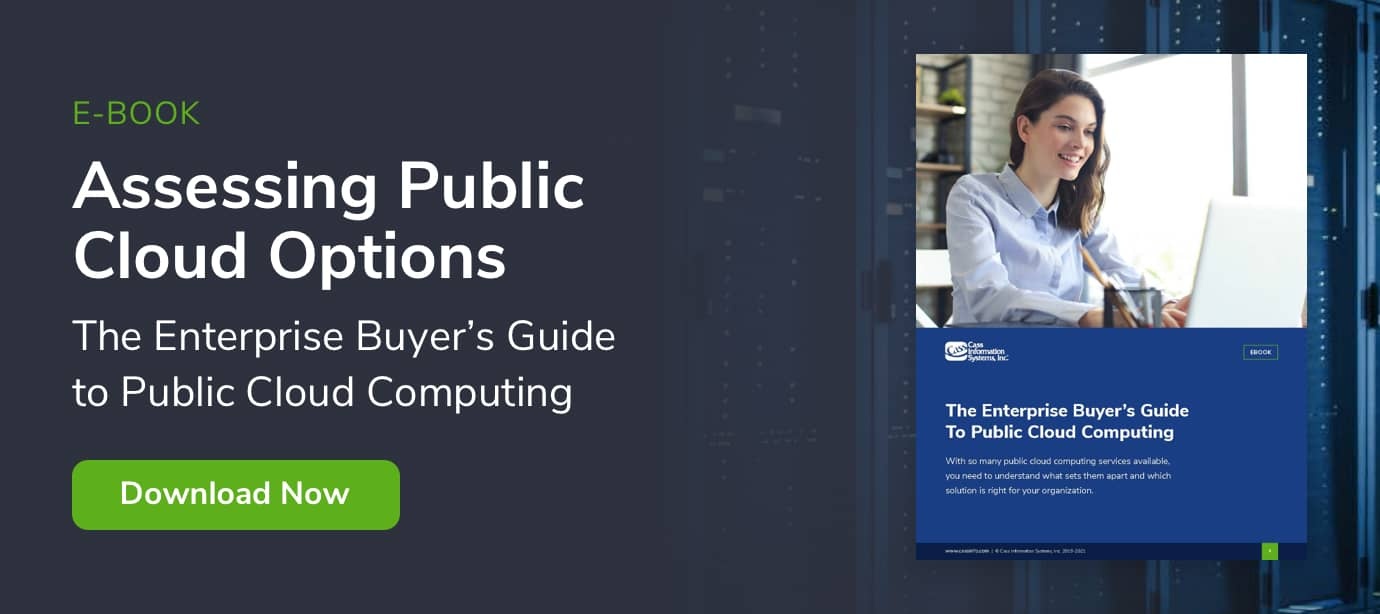In recent years, an ever-increasing number of organizations have moved their data storage and computing capabilities from proprietary in-house systems to the cloud — lured by the potential for greater flexibility, reduced costs, and enhanced security.
A report published at the start of 2019 by the International Data Corporation (IDC) emphasises this change. In it, the IDC forecasted a compound annual growth rate of 22.5% for the five years between 2017-2022 in public cloud services and infrastructure. This translates to an eye-watering $370 billion being spent on public cloud services by the end of that period.
However, if a separate study conducted by RightScale is to be believed, this extraordinary growth can be partially attributed to the inability of most organizations to manage their cloud expenditure efficiently.
According to RightScale, on average 30-45% of estimated cloud spend is wasted, while a recent Gartner report predicts that as much as 80% of organizations will exceed their IaaS budgets in 2020. The primary cause: poor optimization processes.
Improving the administration of cloud finances is thus a top priority for the majority of organizations. But, to do that effectively, decision-makers need to take a holistic approach to cloud cost management.
Identifying Inefficiencies in Your Cloud Infrastructure
At the risk of stating the obvious, the amount of money you spend on your cloud estate is inextricably linked to resource consumption.
Nevertheless, streamlining cloud management isn’t as straightforward as reducing costs in the areas that have the greatest impact on your budget. In fact, viewing costs in isolation, without considering the wider context of your operation, can be a recipe for disaster.
At the most basic level, you must be aware of the resources, platforms, and systems that comprise your cloud estate if you’re to manage costs effectively.
Upon closer inspection, you might discover numerous examples of orphaned or poorly optimized resources, caused by nothing more insidious than a simple oversight. Because a storage volume has been left running after the associated compute instance has been deleted, for example. Or a completed test operation wasn’t switched off at the end of a recent deployment phase.
Naturally, this is especially common in complex, hybrid cloud environments consisting of thousands of complementary services, themselves carrying literally millions of individual line items. Either way, the result is the same: you discover you’ve been paying for outdated resources that aren’t contributing any value to your operation.
Beyond eliminating waste, a holistic approach to cost management also helps identify and address issues in other areas. Some of the most significant include:
- Reducing DevOps expenditure
- Improving governance
- Automating reports and alerts
- Rightsizing
- Implementation of auto-scaling
- Automating accurate chargebacks/showbacks
- Resource inventory transparency
- Refining data storage
To cut a long story short, the goal is to know exactly what you’re paying for and the value it brings to your organization.
Such transparency offers a range of associated benefits worth considering. Apart from anything else, a crystal-clear picture of your cloud infrastructure allows you to optimize billing and make accurate purchasing decisions over the long term. For instance, taking advantage of volume discounts and temporary spot-pricing offers during periods of low demand — things that aren’t possible if you’re working with restricted or incomplete data.
Accomplishing the above will almost certainly require the assistance of a cloud service expense management (CSEM) tool or third-party provider — itself an integral part of your cost management strategy.
Finding the Ideal Cloud Cost Management Solution
With so many third-party platforms and service providers to choose from, each differing wildly in scope and maturity, finding the right solution can be a complex and time-consuming process. One that will only become harder, judging by a recent Gartner report in which it was predicted the amount of cloud management platforms will almost double by 2021.
Consequently, it can be tempting to choose the cheapest option or the one that, on the surface at least, appears to offer the broadest range of services. You might even decide to stick with an existing provider or platform, for no other reason than it seems like a preferable alternative to sifting through dozens of competing options.
However, to maximize savings and streamline your cloud infrastructure, you need to consider what kind of solution best meets your operational needs.
Organizations that have a small or highly-centralized cloud estate, for example, will struggle to justify the cost of a complex, multi-cloud solution. Instead, those in this category should focus on finding one or two reliable managed service providers (MSP) or cloud expense management platforms (CSEM) that possess the basic functionality they require. Failing that, another viable solution is to train internal operations teams to manage the day-to-day vicissitudes of cloud management.
Those at the farther end of the spectrum, global operations for which visibility into cloud spend alone isn’t enough and close monitoring of resources is critical if costs are to be kept within tolerable limits, typically require a multi or hybrid-cloud solution.
However, managing a complex multi-cloud environment (one in which one vendor might be in charge of data storage, another big data processing, and a third auto-scaling applications) can be tricky. The same can be said of hybrid cloud estates where public and private cloud resources are utilized simultaneously, introducing an additional layer of complexity.
For that reason, a CSEM tool isn't enough if you're to optimize costs, preserve operational integrity, and safeguard the security of your data as the estate matures over time. What you need is a service partner that has the experience and expertise to police both your inventory and costs.
Put simply, before making any concrete decision as to the long-term future of your cloud estate, you need to consider the wider context of your business: you need to take a holistic approach.
Choose Accredited Cloud Management Experts
Finding the right solution is just the first step.
No matter the size or complexity of your cloud estate, if you fail to monitor expenses and costs on a daily basis, unlocking the full range of benefits that make cloud computing such an attractive proposition will be nigh on impossible.
We offer just such a fully-managed service.
Delivered by a team of experienced, cloud-accredited experts, the cost management techniques employed by Cass give you unparalleled insight and control over your entire cloud estate. Together, this can help you yield savings of up to 50% of your total cloud spend, while also improving security and winning back time in your day.
Download Gartner’s in-depth report to learn more about cloud cost management. Or read our comprehensive e-book for deeper insights into the current state of public cloud computing.
Topics: Cloud Management Services, Infrastructure-as-a-Service

